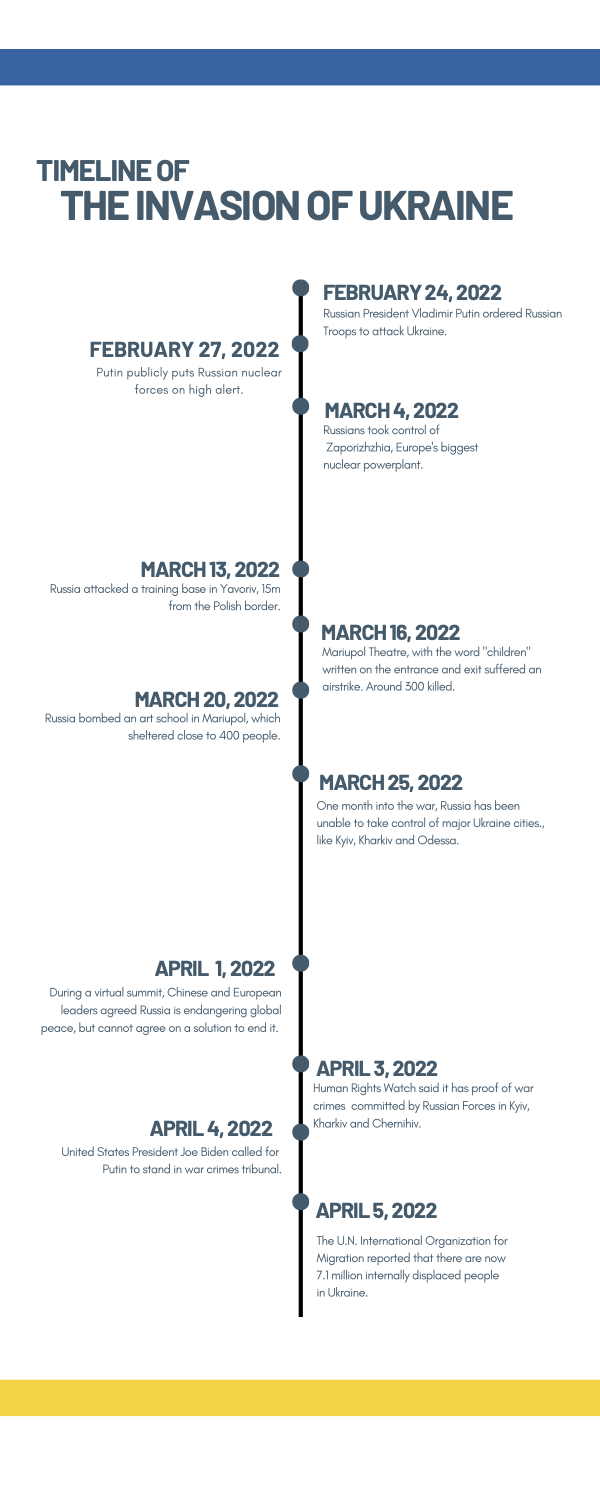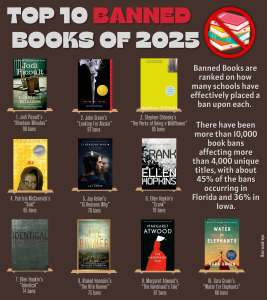The Long History of Conflict Between Russia and Ukraine Lead Up To 2022 Invasion
April 26, 2022

On Feb. 24, Russian President Vladimir Putin ordered Russian troops to attack Ukraine, a nearby country. Since then, ground and air strikes have caused thousands of casualties, both Ukrainian and Russian. On March 4, the Russians took control of Zaporizhzhia, which is one of the biggest nuclear power plants in Europe, and almost set off what would be a disastrous nuclear explosion in the process. As the Russian troops march toward the capital of Ukraine, Kyiv, Americans who are following the war might not realize that Ukraine has been attacked by Russia repeatedly for over 100 years.
Ukraine developed as a Slavic country around the bustling city of Kyivan Rus, which, according to the CIA World Factbook, “during the 10th and 11th centuries was the largest and most powerful state in Europe.” During the middle ages, Kyivan Rus joined the Polish-Lithuanian Commonwealth, but eventually severed its ties in the 17th century. Ukraine became its own independent state, known as the Cossack Hetmanate, but it did not last long. By the 1750s, Russia began its first conquering of Ukrainian territory, eventually gaining all of it.
A series of Russian revolutions in the 19th and early 20th centuries saw any glimpse of hope for Ukrainian independence ultimately end. With the Russian October Revolution in 1917, which toppled the monarchy in Russia, their control over Ukraine was relinquished; however, Ukraine only experienced freedom for three years before Russia, at the time the communist Soviet Union, once again conquered them. Ukrainians fought against Joseph Stalin’s forced government control of agriculture, which resulted in many casualties. Stalin commanded a forced famine be exerted upon Ukraine, which involved Russian troops intercepting food imports and even stealing food from shops and civilians’ homes. The result of this famine, known as the Holodomor, was the death of 3.9 million Ukrainians.
Ukraine did not see its independence until 1991, when the Soviet Union finally collapsed. This freedom has not come without continued Russian interference, however. In 2014, Putin commanded the takeover of Ukraine’s Crimean Peninsula, saying he wanted to protect the ethnic Russian inhabitants. This led to a series of skirmishes between Ukraine and Russia, with failed attempts at peace treaties, which has continued into the present day.
Now, Putin’s military launch in Ukraine has been called “the largest conventional military attack on a sovereign state in Europe since World War II” by the CIA. Many western countries, including the United States, have placed sanctions on Russia to show its support of Ukraine and to condemn Putin’s actions; however, a nation is not just its leaders, especially when that nation has a history of political authoritarianism. As a result, Russian citizens are suffering from these economic blows.
Whatever Putin’s aim may be for attacking Ukraine, many are worried this event will cause the next World War.
Editor’s Note: We may update this article as the conflict continues.









